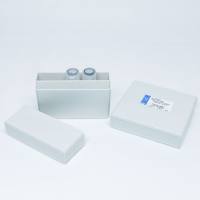Capillary Electrophoresis in Drug Discovery
互联网
互联网
相关产品推荐

Recombinant-Synechocystis-sp-Drug-sensory-protein-AdspADrug sensory protein A EC= 2.7.13.3
¥14672

Recombinant-Human-Anthrax-toxin-receptor-2ANTXR2Anthrax toxin receptor 2 Alternative name(s): Capillary morphogenesis gene 2 protein; CMG-2
¥12838

Recombinant-Lactococcus-lactis-subsp-cremoris-Multi-drug-resistance-efflux-pump-pmrA-homologpmrAMulti-drug resistance efflux pump pmrA homolog
¥9842

nfsA/nfsA蛋白Recombinant Escherichia coli Oxygen-insensitive NADPH nitroreductase (nfsA)重组蛋白Modulator of drug activity A蛋白
¥2328

ABCC1抗体ABCC1一抗抗体Multiple drug resistance protein 1 antibody抗体ABCC1 Antibody抗体
¥1100
相关问答

